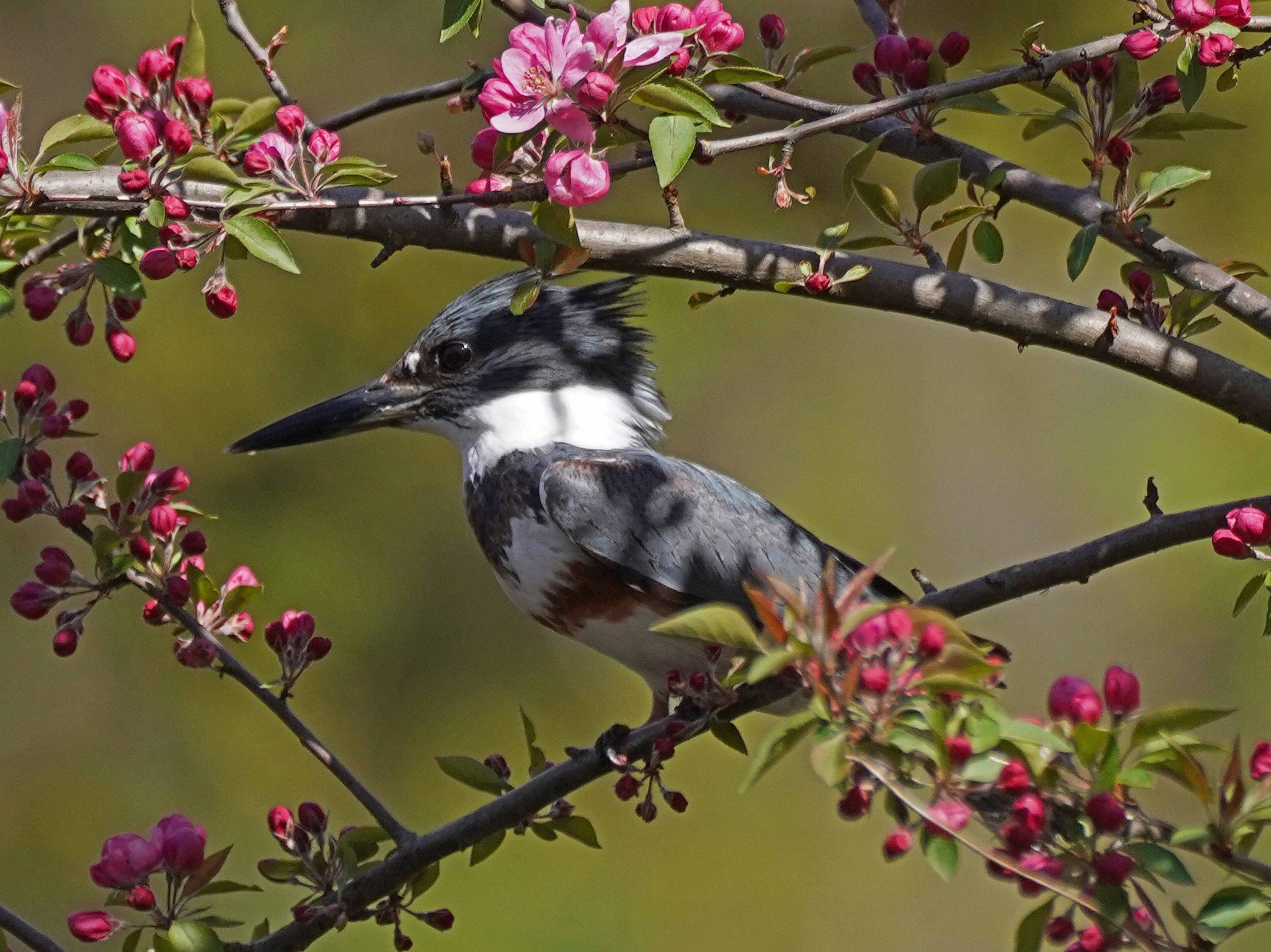I often hear the belted kingfishers (Megaceryle alcyon) before I see them. I hear the rattle, then spot the bird zipping over the water, often smacking down to catch a fish or crayfish. These colorful, big-headed birds hang out along rivers and shorelines — including the water areas of Central Park, Mount Loretto Unique Area and Jamaica Bay Wildlife Refuge, where I filmed them for the Filming the Feathers video. I have also seen or heard them at Marine Park in Brooklyn. The females are the colorful ones in this bird species, having a blue "belt" and a rusty colored "belt" (the male has a blue belt).
Belted kingfisher, Dell Waters, Green-Wood Cemetery, April 17, 2022
A belted kingfisher at sunset on March 26, 2019, seen from the beach between Mt. Loretto Unique Area and the Lemon Creek pier on Staten Island. A fire near the area was causing a lot of smoke, which created a dramatic red background as the sun went down.
Belted kingfisher perched high over Dell Water, Green-Wood Cemetery, April 7, 2024
On January 7, 2020, I was able to watch a belted kingfisher with a large fish at Cunningham Pond in Mount Loretto Unique on Staten Island. According to the Cornell Ornithology Lab Web site: “A kingfisher looks for prey from a perch that overhangs water, such as a bare branch, telephone wire, or pier piling. When it spots a fish or crayfish near the surface, it takes flight, dives with closed eyes, and grabs the prey in its bill with a pincer motion. Returning with its prize, it pounds the prey against the perch before swallowing it head first.” After the bird flew off out of camera range, I waited a few seconds before he flew around the water, cackling away. I don’t know if he ate the fish or dropped it.
Belted kingfisher, Marine Park, Brooklyn, January 30, 2019
Female belted kingfisher, Jamaica Bay Wildlife Refuge, September 30, 2017
I thought harpsichord music captured a sense of the rattle of the kingfisher in the Filming the Feathers video. The music is Johann Ludwig Krebs, Bourrée; William Babell, Prelude in G major 'from the Frontispiece'; Christoph Graupner, Partita in F major, GWV 835, performed by Richard Kram; Dietrich Ewald von Grotthuss, Rondo in C major, performed by Joan Benson, obtained from MusOpen.org, a royalty-free music source.
Male belted kingfisher, Green-Wood Cemetery, May 2, 2021
Generally, the kingfishers are pretty far away, so my photos have not been as crisp as I would like.
Female belted kingfisher, the Pond, Central Park, October 13, 2015
Belted kingfisher, Mount Loretto Unique Area, August 11, 2017
Belted kingfisher, the Pool, Central Park, March 29, 2015
The best opportunity to photograph a belted kingfisher came at the blind on the East Pond at Jamaica Bay Wildlife Refuge, on September 30, 2017.


















